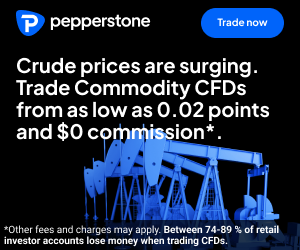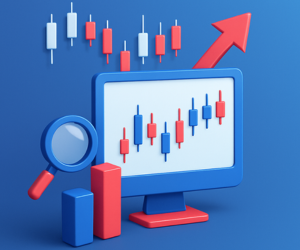Contracts for Difference (CFDs) are one of the most vilified tools in the financial ecosystem. Are they a shortcut to high-capital investing? Or just a casino?CFDs are often accused of fueling reckless speculation, blowing up retail accounts with catastrophic losses, and trapping novice traders. But the truth is, CFDs are neither good nor bad—they’re simply tools. And like any tool, their effectiveness or danger depends entirely on how you use them.This article demystifies CFDs, explaining what they really are, the genuine advantages they offer, and why so many people misuse them. No smoke, no false promises, no conspiracy theories—just analysis and real-world experience.

What are CFDs and what are they used for?
A Contract for Difference (CFD) is a derivative instrument that allows you to speculate on the price movements of underlying assets without actually owning them. Essentially, it’s an agreement between the trader and the broker to exchange the difference between the entry price (when the trade is opened) and the exit price (when it’s closed).
In practice, this means you can take long positions (if you believe the price will rise) or short positions (if you believe it will fall) on stocks, indices, commodities, currencies, cryptocurrencies, and more—all without buying the physical asset.
CFDs are widely used for short-term speculation, hedging portfolios, diversifying across markets, or testing advanced strategies. Their flexibility has made them popular among retail traders looking for global market access with relatively small initial capital.
Advantages of Using CFDs
Although many associate CFDs with aggressive, short-term trading, the truth is that their practical applications go far beyond just “buying low and selling high.” CFDs are a versatile financial tool that adapts to different investor profiles, time horizons, and strategic objectives. Their true power lies in how they are integrated into a financial plan with purpose.
A disciplined trader—emphasis on the word disciplined—can use CFDs to execute hedging strategies, trade macroeconomic events, rotate between sectors, or gain exposure to assets that are not directly available in their country or through their traditional brokerage account (for example, investing in gold without having to buy a bar). In addition, since they don’t require the physical purchase of the asset, CFDs allow for more dynamic and less bureaucratic trading.
For instance, if an investor wants to take a position in the Japanese Nikkei index or WTI oil without opening an account abroad, they can do so through CFDs on their local platform. They don’t need to worry about custody of the asset or market access logistics: everything is managed synthetically, with much lower operating costs.
The applications of CFDs range from intraday trading to institutional portfolio management. Let’s take a look at the main strategic uses that serious investors give them.
Risk Hedging: One of the most solid uses of CFDs is as a hedging tool. For example, if you hold shares in technology companies and believe the sector might correct due to an interest rate hike, you can open a short position on the Nasdaq 100 with CFDs. This protects your portfolio without the need to sell your main positions. It is ideal for those who manage long-term portfolios but want to navigate short-term specific risks without liquidating assets.
International Exposure: Accessing international markets with a local account is one of the biggest advantages of CFDs. You can trade Asian indices, commodities like gold or natural gas, and even individual shares of foreign companies such as Apple, Tesla, or Alibaba, without having to deal with offshore accounts.
Short Selling: CFDs allow you to open bearish positions immediately. This is key in volatile environments or when identifying a bubble or overvaluation in an asset. With traditional shares, short selling involves complex processes, securities lending, and regulatory limitations. With CFDs, it’s just one click away.
Technical Trading, Tactical Rebalancing, and Events: Many traders use CFDs to take advantage of events such as earnings reports, central bank decisions, or economic indicator releases. Leverage allows small movements to be traded with high return potential. In these cases, CFDs serve as tactical instruments for fast and experienced operators. Another increasingly common application is tactical portfolio rebalancing. For example, suppose an investor expects a mild recession in the U.S.. In that case, they can reduce their exposure to American equities and compensate by taking a long position in gold or the Swiss index, all through CFDs. This way, they maintain diversification without physically moving their main portfolio.
Derivative Strategies: Advanced traders combine CFDs with other products such as options, futures, or ETFs. For example, they can use CFDs to replicate a “long/short” sector strategy: buying banks and selling technology, all from the same platform and with less required capital.
Efficient leverage (when used properly): Leverage is possibly the most famous—and controversial—feature of CFDs. For example, with 10:1 leverage, a trader can open a $10,000 position with only $1,000 margin, magnifying both gains and losses. Used responsibly, it allows greater market exposure without immobilising large sums of money. This “capital release” increases efficiency, enabling more investment ideas to be executed with the same funds (in other words, investing in many assets with the same amount of money). Beginners often misuse leverage, treating it like gambling. But leverage is not “bad” in itself—it’s like a power tool: it speeds things up but requires technique and experience. In trained hands, it’s a clear advantage.
Savings on Commissions: While CFD apps are not known for being “low cost,” depending on your particular strategy, they can be much more efficient in terms of expenses and broker fees. The main cost usually comes from the spread (the difference between bid and ask price) and overnight financing charges if leveraged positions are held overnight. However, for short-term traders or intraday hedges, these costs can be negligible compared to other financial products.
Education and Simulation Tool: A frequently overlooked advantage of CFDs is their value as a learning tool. Most CFD brokers allow you to open unlimited demo accounts, where you can simulate trades in real time with virtual money but under real market conditions. In addition, CFDs allow you to simulate market scenarios without committing large amounts of capital (in many cases, the minimum deposit is, for example, $200). Through demo accounts or small positions, many new traders test hypotheses, adjust automated systems, or develop trading algorithms without taking big risks. This educational aspect is underestimated, but it is vital for developing practical skills.
Conclusion of the Advantages: the real power is in the use
There is a common idea that CFDs are instruments for retail, beginner, or unsophisticated investors. However, even institutional traders or boutique funds use CFDs as a way to adjust positions more quickly and economically, especially when seeking intraday liquidity or avoiding tax frictions. In this context, the CFD becomes an execution tool, not a casino bet.
CFDs are not for everyone. But for those who understand how they work, they offer real advantages: flexibility, efficient leverage, global diversification, low costs, and speed. They are not a magic path to getting rich—nor do they pretend to be—but they are a powerful instrument within the modern investor’s toolkit.
Like any financial tool, CFDs require knowledge, practice, and emotional control (we’ll cover this in the next section). But when used correctly, they make the difference between improvising and operating with surgical precision. And in a world where every millisecond counts, that difference is critical.
Common Mistakes When Trading CFDs
CFDs are powerful tools, but like any instrument with leverage and high accessibility, misuse can have devastating consequences for your investment account (your money!). Unlike traditional assets—stocks, funds, etc.—where mistakes usually show gradually in performance, with CFDs errors are paid for quickly and expensively. That is why it is essential to understand the most common mistakes traders make and how to avoid them.
According to data from multiple financial regulators—such as the UK’s FCA and Spain’s CNMV—between 70% and 80% of retail traders who operate with CFDs consistently lose money. This statistic should not be interpreted as a death sentence on the product, but rather as a wake-up call about how the majority of clients use it. But is the blame on the tool itself (which is risky) or on the users (who misuse it)? At this point in the article, the answer is left open to the reader—we’ll address it at the end.
Below, we present a technical and psychological breakdown of the most common mistakes that ruin accounts. Unlike the advantages, here we will open each mistake in detail to provide more insight, giving extra emphasis for those who want to avoid them. This is not a generic list, but a summary of real behaviors repeated by both beginners and experienced traders who never took the time to professionalize their approach.
Chronic Over-Leverage
Leverage is like a drug for many novice traders. Starting out with the possibility of controlling $10,000 with only $1,000 capital can be exciting. But it is also the perfect recipe for disaster if the mechanics of margin, per-trade risk, and drawdown management are not understood.
Many traders use the maximum leverage allowed by their broker without knowing how much they could lose if the market moves just 1% against them.
Others believe stop-losses are optional, assuming “the price will come back,” relying on magical market reversals.
It is also common to see traders open multiple high-leverage positions simultaneously, with no correlation analysis or control of total exposure.
Over-leverage inevitably leads to forced liquidations, margin calls, or emotional breakdowns so severe that the trader simply abandons the account.
Discipline here is non-negotiable: keeping leverage well below the maximum allowed is a sign of operational maturity.
2. Trading Without a Plan or Structure
Many traders enter a position “just because”: because someone on Reddit, Instagram, or X said so, because they saw a big green candle, or simply because they had a “gut feeling.” Trading without a defined plan is not trading—it’s gambling. A minimum trading plan should include:
A concrete reason for entry (technical or fundamental setup).
Position sizing adjusted to account risk.
A pre-defined stop-loss level, not improvised on the spot.
A realistic take-profit target.
Clear conditions for early exit if market conditions change.
Trading without a plan is like sailing without a compass—and in volatile markets, that means sinking sooner or later. The good news? This error is 100% fixable with education, practice, and keeping a trading journal.
3. Ignoring Risk Management
One of the most destructive mistakes in CFD trading is ignoring both per-trade risk and total account risk. Many traders place stops that are too tight, fearing they’ll get stopped out, or they skip stops altogether. Others risk 20% of their account on a single trade. Both are poor decisions and show a lack of market understanding.
The general rule among professional traders is clear: risk no more than 1–2% of capital on any single trade. With CFDs, that means adjusting position size, calculating levels correctly, and respecting stop-losses at all costs.
“All or nothing” is not a strategy—it’s an emotional trap. Trying to “save yourself” in one trade is ridiculous.
Surviving 50 small losing trades is possible. One huge losing trade is not.
Stops must be based on market logic, not emotions or personal needs.
Without risk management, even the best strategy is doomed to fail. This is the cornerstone of sustainable trading.
4. Lack of Real Financial Education
The average losing CFD trader doesn’t really understand the product. They don’t know what a spread is, how overnight swaps are calculated, the difference between available margin and required margin, or how macro news impacts their assets in real time.
The problem is that many jump into trading with real money without even spending a week studying the technical aspects of CFDs. This ignorance turns them into victims of the market itself.
It is essential to understand how margins and leverage are calculated.
You must know the trading hours of each asset.
Reading an economic calendar is basic knowledge.
Understanding “invisible” commissions can change your profitability.
The solution is clear: education. Take the time to study, take courses, practice on demo accounts, and truly understand what you are doing. The market does not forgive ignorance.
5. Weak Psychology and Emotional Trading
Most of the previous mistakes have a common root: poor emotional control. The trader who over-trades, ignores their plan, doubles down after losses, or panics at every red candle is reacting from fear or greed. Deep down, they know they are risking 100% of their account on a single trade.
Psychology is 80% (or maybe 99%) of trading success. And yet, it is the least studied area by beginners. Markets are designed to trigger intense emotions—euphoria, anxiety, despair. Without mental preparation, those emotions drive disastrous decisions.
Avoid checking charts every 5 seconds to reduce unnecessary stress.
Having a rules-based system limits emotional interference.
Reviewing your trading journal with objectivity helps improve future decisions.
Trading like a professional is not just about analysis—it’s about not reacting emotionally when things don’t go as expected. Self-control is the most underrated advantage (gained only through experience) in CFD trading.
Conclusion: The Problem Isn’t CFDs
The common mistakes when trading CFDs do not come from the instrument itself, but from how it is used (we’ve answered the question posed at the beginning of this section). The narrative that “CFDs are dangerous” is only partially true: they are, if treated as a shortcut or a casino. But when used with planning, education, and risk control, they are an extremely useful tool for accessing global opportunities in a fast and strategic way.
In summary, the most serious mistakes made with CFDs are:
Not understanding the product or its costs.
Using extreme leverage without measuring consequences.
Trading without a plan, system, or discipline.
Making emotional decisions without psychological control.
Avoiding study, practice, or reviewing personal results.
Correcting these mistakes is not simple, but it is possible. And it’s worth it: the financial market can be a place to grow, diversify income, and develop skills that last a lifetime.
But first, improvisation must stop. Because in trading, what is not measured cannot be improved. And what is not improved will cost you money.






